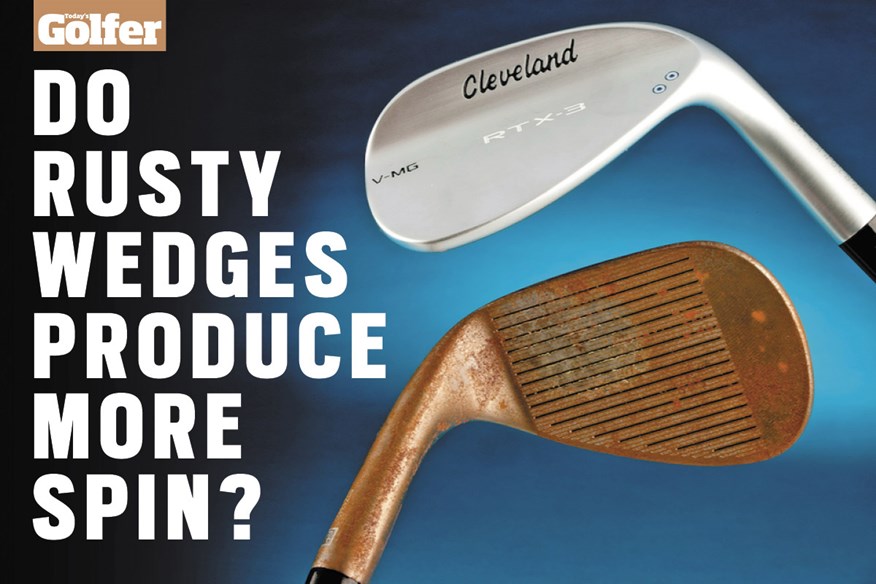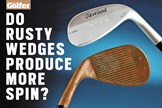Do rusty wedges really give you more spin?
Last updated:
We put Cleveland’s Tour Raw RTX- 3 up against a normal version to answer the question once and for all: Do rusty golf wedges really give you more spin?
Rusty wedges appear in many a tour pro’s bag. Sometimes, the rust is a result of a hard life spent splashing shots out of bunkers and pounding golf balls from the turf on ranges around the globe. But usually it is totally inentional.
‘Raw’ wedges (where there’s no plating or finish coating so rust can for on the head’s surface) are nothing new. Bernhard Langer was a massive fan of going raw, not only on his wedges but his irons too – as he felt they gripped the golf ball better. Rusty wedges have a reputation for spinning shots mor than shiny ones, yet there’s never really been any firm proof to support the idea.
To find out the truth, we put a rusty Cleveland RTX-3 golf wedge up against a Tour Satin version.
RELATED: Best Golf Wedges 2020
How we tested a rusty golf wedge against a normal golf wedge
Both testers hit shots with a 52 and 58 degree Cleveland RTX-3 Tour Satin and RTX-3 Tour Raw wedges. We used a premium ball and recorded data for each shot hit. After analysing data for all four wedges we came to our conclusions on whether the rusty wedge myth actually stacks up.
RELATED: Which golf ball spins the most with a wedge?
What happened in our golf wedges test?
We hit full-out shots and half-shots with both the 52 and 58 degree Cleveland wedges. Across the board, for both testers, the Tour Satin (not rusted) wedge performed fractionally better. There was no obvious reason why the rusty finish didn’t quite perform better, but we reckon the answer lies in a modern wedge’s tech tory.
Like a lot of wedges the new RTX-3 has laser-milled micro grooves between each fave groove. By letting rust form over these grooves, we reckon spin could be hampered. So in effect, modern, laser-milled grooves seem to be more effective than rust at imparting spin.
The rust myth started years ago, when clubs were finished in chrome. When the chrome wore through the resulting rust did enhance spin. But nowadays, as milling technology is so good, it’s likely wedge manufactureres have realised precision-milled grooves are better at consistently imparting spin than rust.
RELATED: Tested – Titleist Vokey SM8 vs Cleveland RTX ZipCore
The Key Numbers: Rusty golf wedge vs normal wedge
52 degree Cleveland RTX-3 (mid-bounce)
– Average Tour Satin backspin: 7,781rpm
– Average Tour Raw backspin : 6,250rpm
58 degree Cleveland RTX-3 (mid-bounce)
– Average Tour Satin backspin: 6,644rpm
– Average Tour Raw backspin : 5,248rpm

